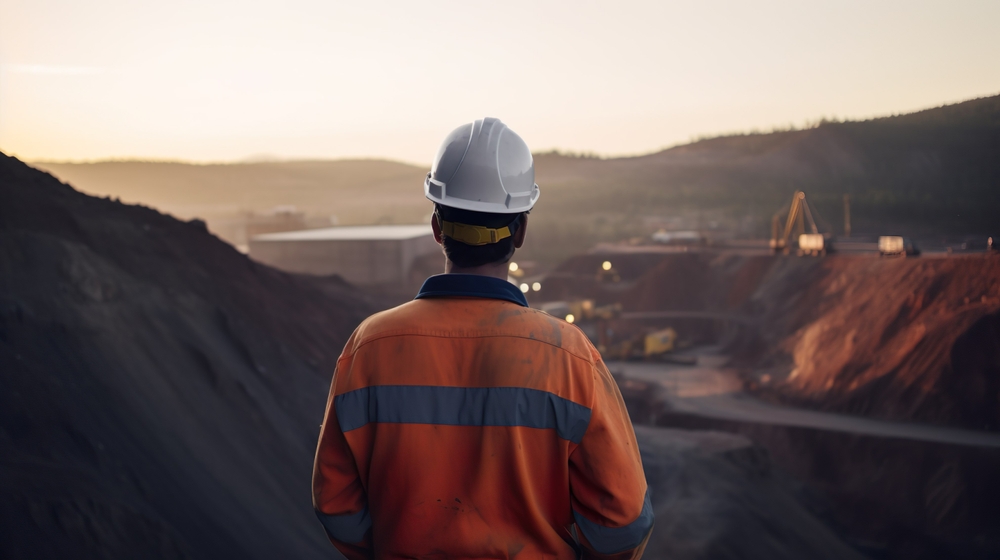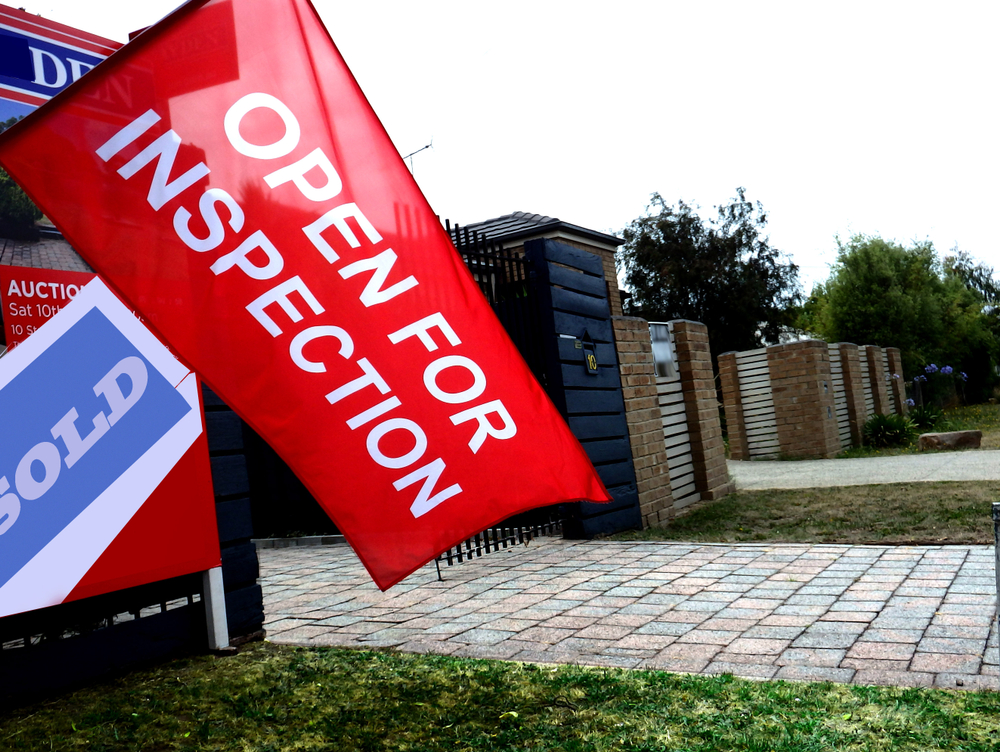Copper and uranium prices rise as world seeks a low emissions future
The 5-year official forecasts for commodity prices reveal some surprising winners and losers
The Department of Industry and Resources has released its official five-year forecasts for commodity prices, with the iron ore price expected to trade more than 25 percent lower than where it is today in FY29. Meantime, copper, nickel and uranium prices are expected to rise materially as the world decarbonises and embraces greater electrification and nuclear energy.
Mining stocks comprise a huge proportion of the ASX, and commodity prices directly affect share prices and company earnings. Therefore, these official price forecasts can provide valuable insights for shareholders of major miners like BHP, Rio Tinto, Fortescue, Mineral Resources and South32.
Australian resource and energy export earnings are forecast to be $417 billion in FY24. This is about 10 percent lower than the record $466 billion in exports last year. Those record exports were largely the result of a spike in energy prices as Western countries sought to avoid Russian oil and gas. Export earnings are expected to fall to about $369 billion in FY25 due to falling commodity prices, primarily energy prices, and a rising AU/US dollar. Exports would then level out through to FY29.
Iron ore is expected to remain Australia’s biggest earner among all our resource and energy exports, followed by liquified natural gas (LNG), other metals, metallurgical coal, thermal coal, base metals, and gold. The iron ore price closed 1.5 percent higher overnight at US$104 per tonne. It’s fallen 10.5 percent over the past month due to weaker Chinese demand. The department is forecasting an average price of US$103 per tonne in FY24. By FY29, the average is expected to have fallen to US$75 per tonne.
LNG prices are expected to fall from an average of AU$17 per gigajoule this financial year to AU$12 per gigajoule in FY29. Metallurgical coal will fall from US$289 per tonne in FY24 to US$207 per tonne in FY29. Thermal coal will drop from US$135 per tonne in FY24 to US$115 per tonne in FY29.
The oversupply of lithium seen last year as global production ramped up while demand fell amid fewer people buying electric vehicles (EVs) is set to continue to weaken lithium commodity prices. Some Australian lithium miners, such as IGO and Core Lithium, have suspended some of their operations after lithium prices plummeted in 2023. The department expects an average price of US$1,800 per tonne this year, falling to an average of US$1,231 per tonne in FY29.
Some particular metals are expected to soar in value due to the green energy transition. The average price of copper, which is essential for electrification and used in solar panels, wind turbines and EVs, is expected to be about US$8,258 per tonne this financial year. By FY29, the department expects copper to be trading above US$10,000 per tonne.
The nickel price has fallen dramatically in recent times, largely due to much new supply generated in Indonesia by Chinese-backed operators. The nickel price has dropped from an average price of US$23,911 in FY23 to US$16,845 today. The Federal Government recently added nickel to its Critical Minerals List to give Australian producers access to funding for support. The resources department expects the nickel price to recover somewhat to an average price of US$20,950 in FY29.
Another commodity expected to rise significantly in value over the outlook period is uranium. Many countries are embracing nuclear energy and building small modular nuclear reactors (SMRs) to support domestic energy needs. The uranium price leapt from an average US$51 per pound in FY23 to a 16-year high of US$106 per pound in February. The department anticipates an average price of US$85 per pound for FY24, rising to US$119 per pound in FY29.
“While global prices are easing, the [forecast] shows demand is likely to be sustained for commodities used in low emissions technologies, including iron ore, copper, aluminium and lithium,” said Resources Minister Madeleine King. The department noted that Chinese demand will continue to heavily influence commodity prices, however, India is now experiencing the world’s strongest economic growth and its expanding manufacturing sector will mean higher demand for resources.
This stylish family home combines a classic palette and finishes with a flexible floorplan
Just 55 minutes from Sydney, make this your creative getaway located in the majestic Hawkesbury region.
People spend a lot of money on all sorts of things, only to later ask themselves: Why?
While it may be true that money can’t buy happiness, that doesn’t stop people from trying.
And then wishing they hadn’t.
Many of us have had a big-ticket expenditure that we later come to regret. Maybe it’s something meant to convey status, which we realise later did nothing of the sort. Maybe it was to fulfil dreams of a luxury lifestyle, only to discover that we’ve bought a bottomless money pit.
We asked Wall Street Journal readers to share their stories of pricey purchases that ultimately led to disappointment. Below are some of their stories and reflections—with some free advice to their younger selves.
The wristwatch of his dreams
“It was back in day of wingtip shoes, white shirts and red ties,” says Bryan Desloge, who began his career at IBM in 1984. And like many rookie employees, Desloge wanted to fit in. “I bought suits. I took my earring out. I cut my hair and I registered in the Republican Party,” he says. To complete the look, he paid over $7,000 for the wristwatch of his dreams—a Rolex Submariner. It was a hefty sum, considering he was making roughly $18,000 a year.
Now 64 and retired, Desloge says his younger self saw the stainless-steel watch as a status symbol. “The older guys had nice dress watches already, while I wore a Casio or a Timex.” Just two years after buying the Rolex, however, Desloge realised the timepiece was impractical for him. “The Rolex is great, but I don’t want to look at a clock face,” he says, “and the glow-in-the-dark hands are hard to read at night.”
Desloge, who lives in Tallahassee, Fla., recently tried to give the Rolex to his son, who turned him down. So it remains tucked away in favor of a Garmin smartwatch, which has a fitness tracker, alerts and email, among other features. Purchased for about $500, the Garmin can multitask in ways his Rolex cannot. “I will probably wear that watch for the rest of my life,” Desloge says.
Cabin fever
The family called it “the little brown house,” says Michael Kotas of his vacation cabin in the mountains overlooking Tucson, Ariz. In 2005, Kotas and his wife paid $120,000 for the 1950s cabin, and it needed a lot of work.
“We bought it from an older couple, who had dark rugs and wood paneling,” says Kotas, who is now in his mid-60s and retired from a job in technology sales. He redid the cabin “with a cool Manhattan vibe,” updated the electrical wiring and corrected a flooding issue in the basement. In all, Kotas estimates he spent $60,000 in upgrades.
But his financial headaches were far from over.
Even though Kotas owned the cabin, the federal government owned the land it sat on, since it was located within the Coronado National Forest. Leasing the land cost $800 a year when the cabin was purchased, but eventually grew to $3,600 a year by the time it sold.
During that time, two fires came within 100 yards of the cabin, jacking up Kotas’s fire-insurance premiums. Then, a species of bark beetle attacked ponderosa pines there, and the Forest Service required cabin owners to remove infested trees around their property, costing $1,000 to $1,200 a pop. “I counted all my trees around my house and thought, ‘I can’t afford this.’ ”
Over time, Kotas’s children didn’t want to go to the cabin anymore, saying “there was nothing to do,” he says. “We ended up spending about five nights a year there for the last several years.” Kotas, whose year-round home also is in Tucson, came to the realisation that he wasn’t getting his money’s worth. “It became an albatross,” he says.
The tipping point came when a man parked his truck just 100 feet from the cabin and lived out of his vehicle on the side of the road. Kotas sold the cabin in 2022 for $195,000.
“I would probably never buy a vacation home again,” he says. “It was a tough lesson to learn. I wish the [new] buyers well, but all I can say is, ‘Good riddance!’ ”
RV to nowhere
After retiring from a career in ophthalmology, Gordon Preecs bought a large pickup truck in 2013 and a 22-foot travel trailer in 2017 with the dream that he and his wife, Connie Preecs, would visit national parks around the country. Combined, the new vehicles cost around $50,000.
Living in Seattle at the time, the couple started out by taking the RV on short trips, such as an event for woodcarvers in Washington state. It didn’t take long for them to feel pinched in a 120-square-foot RV. “I thought we’d have our own hotel” with an RV, says Preecs, who is now 75 and living in Round Rock, Texas. “But we had to just shove things in there. The kitchen counter was hand’s breadth wide, and the bathroom was like a phone-booth shower. If I dropped the soap, I couldn’t pick it up.”
Three years after purchasing the trailer, Preecs and his wife relocated to Texas to be closer to their grandchildren. Still, they were able to visit Grand Teton and Yellowstone national parks in the Northwest. That’s when they felt the financial pinch of RV ownership.
“At 6 miles per gallon and $60 to $80 a night at RV parks, the expenses really added up,” he says. “We found it was an inefficient way to travel.” Some of the RV parks are located in funky, backwater places, he says. And setup and breakdown at every stop became a hassle. “You want to be free, but you’re not.”
In 2020, they sold the trailer, which had less than 5,000 miles of use, and the pickup for a combined $32,000. With the proceeds, Preecs bought a Tesla.
Outfitted and outwitted
As a vintner in California, much of Pam Starr’s work takes place outside among the grape vines. “I live in jeans and winemaker vests, T-shirts and sometimes boots,” says the 63-year-old. “So I can tear my clothes on a vine or get barrel slime on me” and it doesn’t really matter.
A few years ago, a well-heeled friend with an eye for fashion convinced Starr, who lives in Napa, to join her in San Francisco for a meeting with her couturier—a person who creates luxury clothing to the client’s specifications. The friend had told Starr that she wouldn’t have to buy anything, but this particular couturier was very persuasive, Starr recalls.
For example, the couturier held up a gauzy swimsuit coverup with white sequins and said, “You have to wear this swimsuit coverup by the pool.” Starr paid $1,800 for a custom coverup, but later it hit her: “I don’t wear a coverup when I’m at the pool because I’m actually in the pool.” To this day, it has never been worn. Starr says she spent another $1,800 for an off-the-shoulder silk shirt with three-quarter length sleeves.
The quality of the clothing was low, Starr says. “That silk shirt turned out to be my most disappointing piece,” she says. It didn’t clean well, and hasn’t retained its shape. Many of the pieces she purchased haven’t held up well, she says, even though she rarely wears them. “Out of the 15 items I had made for me, I loved maybe three,” Starr says. “That’s more than $20,000 worth of clothes, and I should have gotten more out of them.”
If she could go back in time, Starr says, she would say to herself, “ ‘Listen, Pam. Pick two things and start slowly. If you like them, you can expand into other things.’ ” Also, she would pause to ask herself how often she would actually wear the clothing.
“Because of a friend, I ended up in a couture shop,” Starr says. “In that world, it’s uncharted territory for me. The couturier pulls you in really hard.” Knowing what she knows now, Starr says, “if I needed someone to design a gown for me, I wouldn’t go back there. I would go to a seamstress locally.”
Just 55 minutes from Sydney, make this your creative getaway located in the majestic Hawkesbury region.
Consumers are going to gravitate toward applications powered by the buzzy new technology, analyst Michael Wolf predicts



















